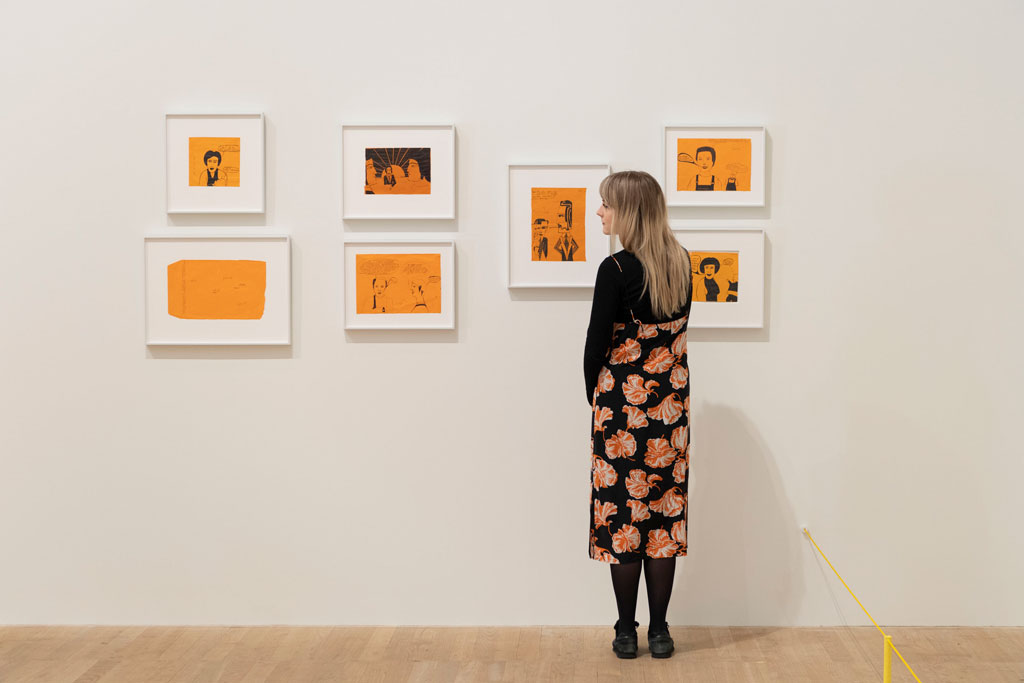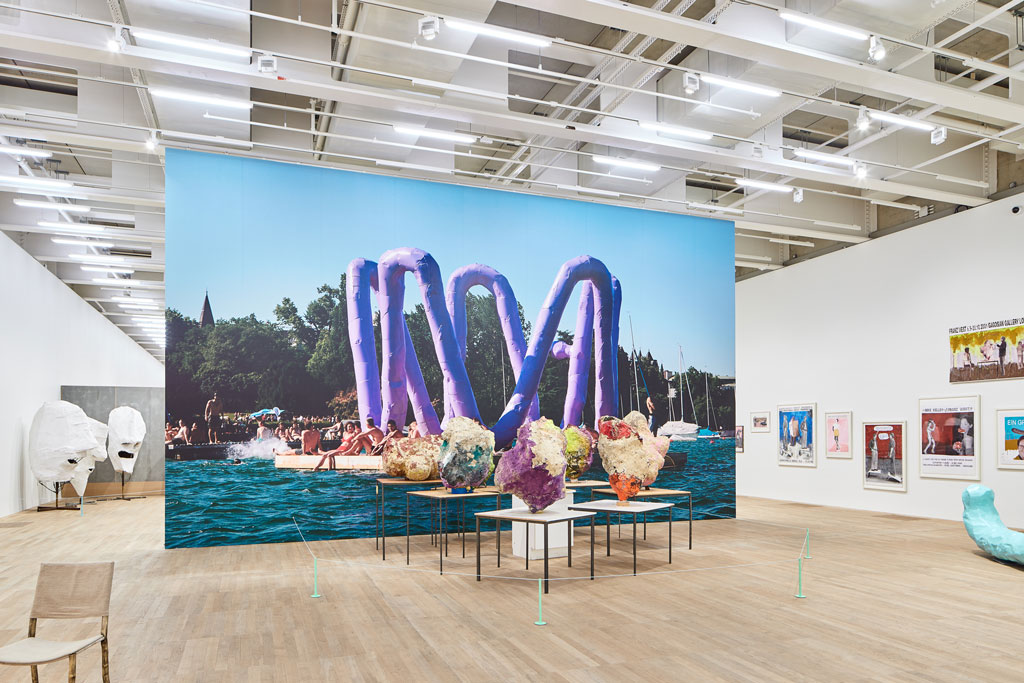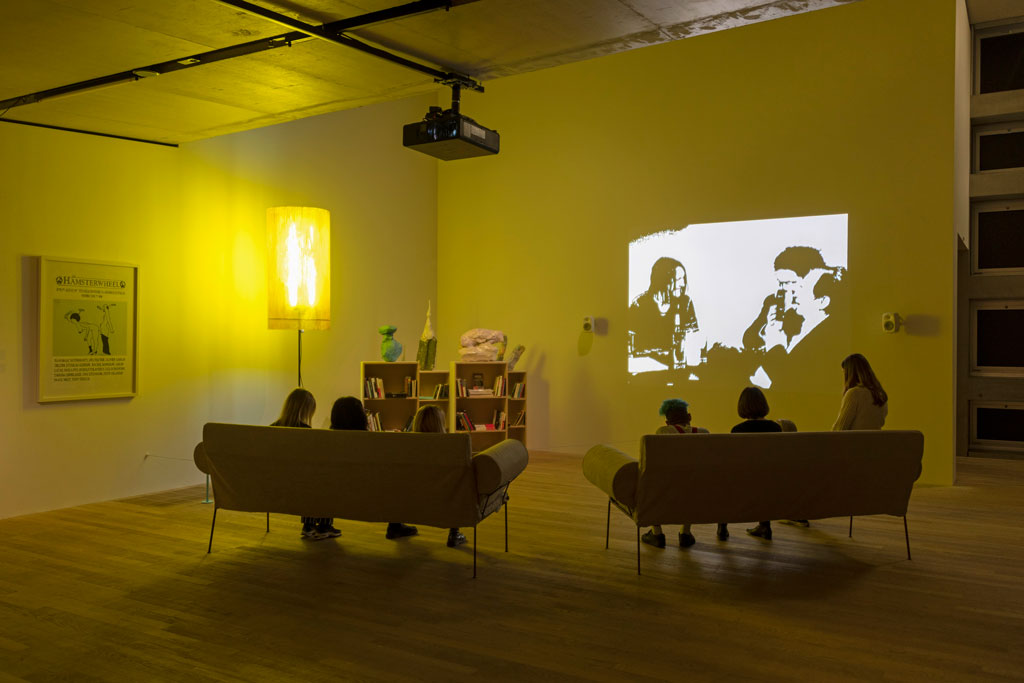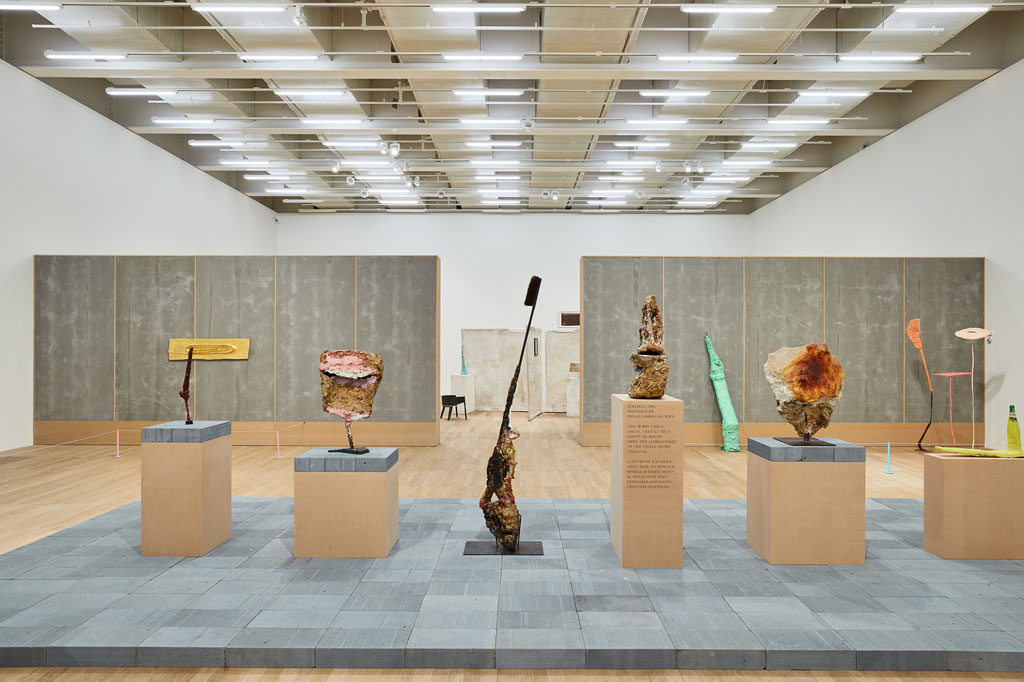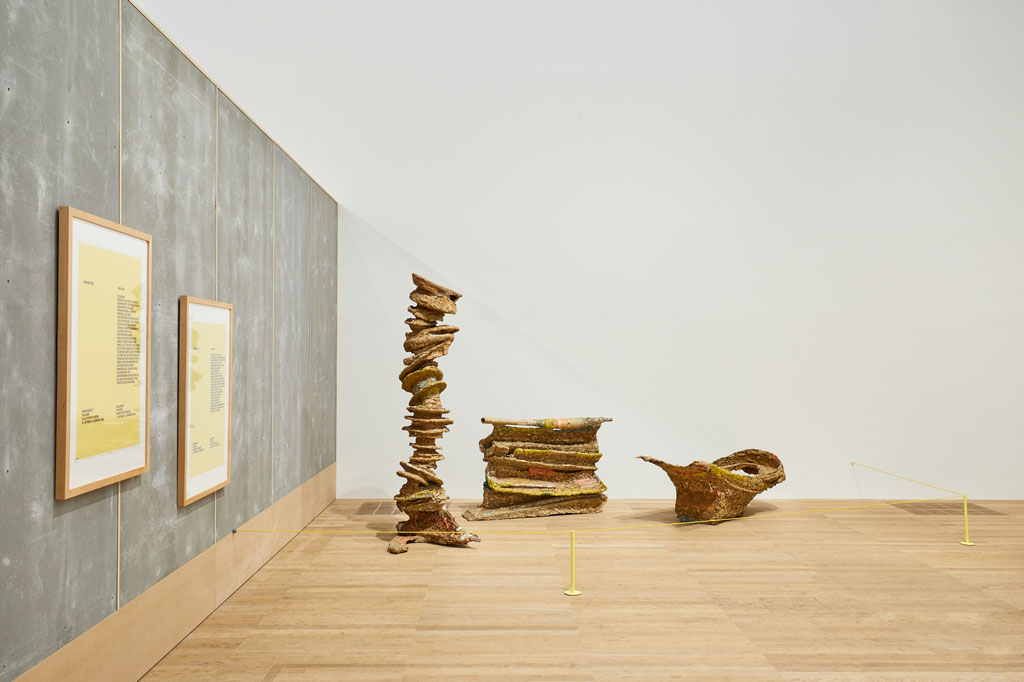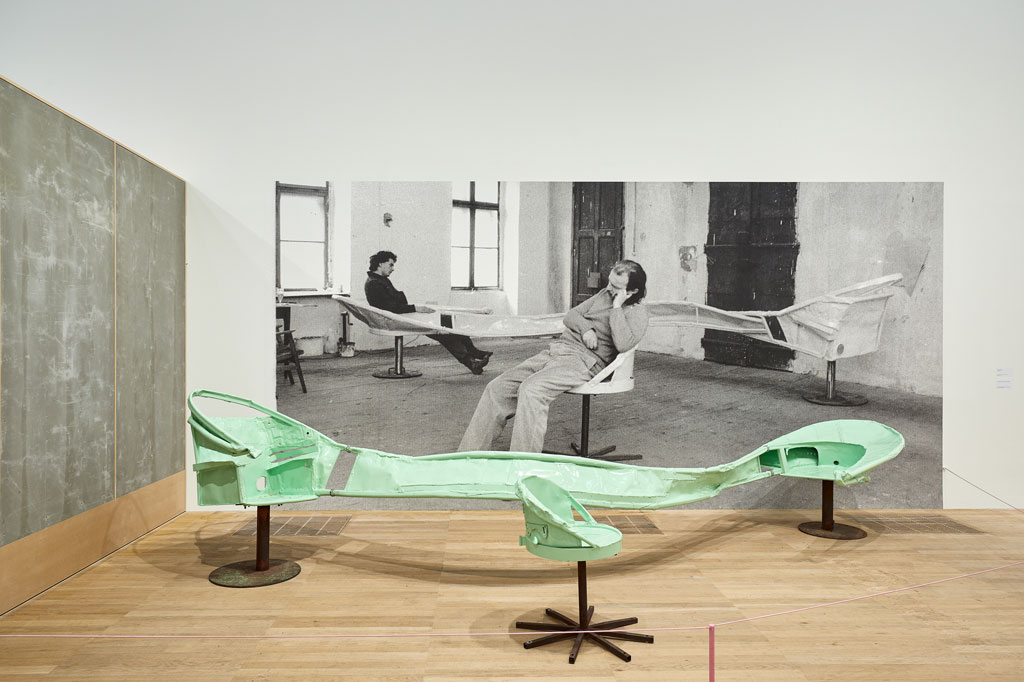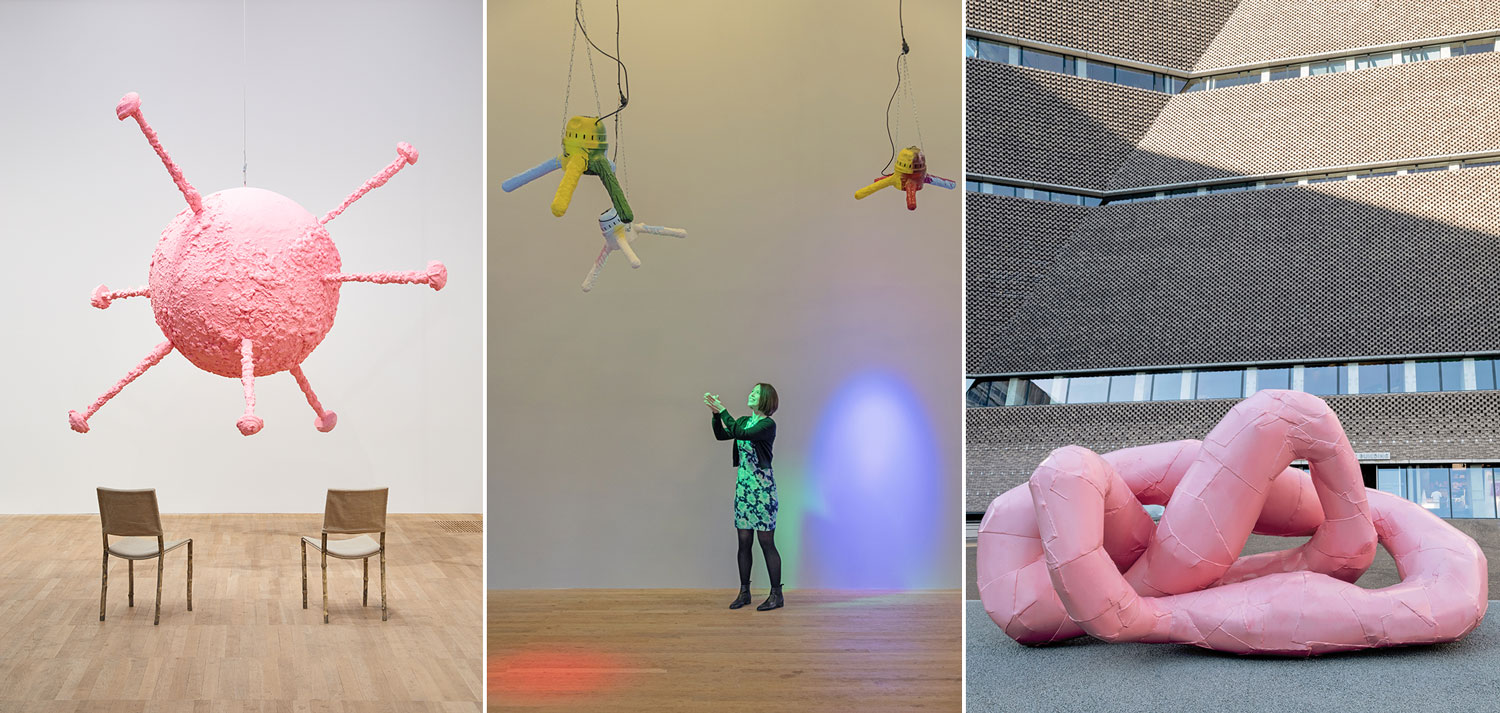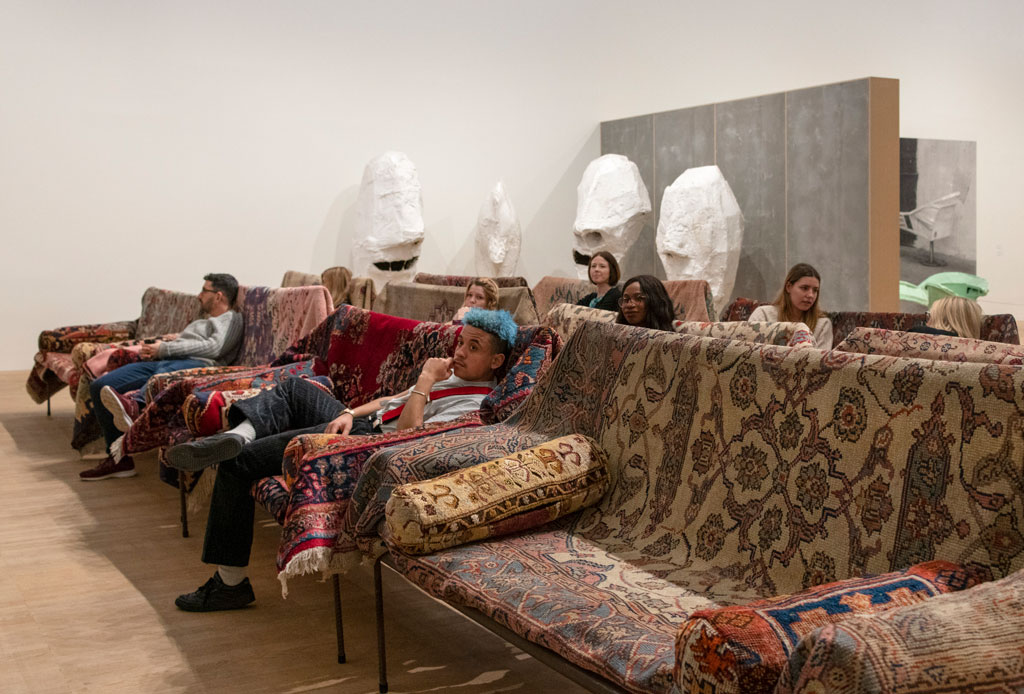ART-PRESENTATION: Franz West-Retrospective
 Franz West, one of the key figures of the international art scene, was first influenced by the generation of Actionists and Performance artists of the sixties. His early sculptures became the foundation of his practice. In the eighties, some of these sculptures, redeveloped on a large scale, exploring the relation to the body as well as to social issues.
Franz West, one of the key figures of the international art scene, was first influenced by the generation of Actionists and Performance artists of the sixties. His early sculptures became the foundation of his practice. In the eighties, some of these sculptures, redeveloped on a large scale, exploring the relation to the body as well as to social issues.
By Dimitris Lempesis
Photo: Tate Modern Archive
Almost 200 works including abstract sculptures, furniture, collages and monumental outdoor works, are brought together at Franz West’s “Retrospective” at Tate Modern explores the irreverent sensibility and playful approach to materials, color and form that characterise West’s punk aesthetic. Almost 200 works including abstract sculptures, furniture, collages and monumental outdoor works, are brought together to show him as one of the most influential artists of the past 50 years. The exhibition offers the first opportunity to recognise the artist’s legacy, celebrating West’s contribution over four decades and uniting key and rarely seen pieces from across his remarkable career. His friend and former collaborator Sarah Lucas has contributed to the exhibition by designing walls and pedestals, bringing her unique material language to the display of Franz West’s playful yet profoundly philosophical work. Play and participation were central throughout West’s career. His early series of small abstract sculptures “Passstücke” (Adaptives), were designed to be touched, worn and manipulated by the public, eschewing beauty in favour of tactile imperfection. In the exhibition is on presentation his “First Passstück” (1978/1994) alongside other important original works from the series, and the installation “Passstücke mit Box und Video” (1996) where four pieces can be handled by visitors. From the 1980s onwards, this exploration into interactivity inspired West to experiment with chairs and other furniture, sometimes inviting audiences to utilise the art work and become part of it themselves. The exhibition brings together furniture works first displayed in the artist’s pivotal 1989 exhibition at the Haus Lange Museum, as well as later, large-scale installations such as “Auditorium” (1992), West’s contribution to Documenta IX, and “Epiphany on Chairs” (2011). The exhibition also includes a large presentation of the artist’s iconic works in papier-mâché. In contrast to the earlier “Passstücke”, these irreverently named “Legitimate Sculptures” were not intended to be handled, but do provoke visceral viewing experiences, at times repulsive or seductive. Occasionally these sculptures were created to stand on unconventional or deliberately crude plinths. In Tate’s exhibition Heimo Zobernig created oblong pedestals to sit both beneath and astride West’s coarse and riotously polychromatic sculptures. In the mid-1980s and early 90s, West also displayed texts alongside some works, serving as an invitation to reconsider the sculptures in unexpected ways. “Redundanz” (1986) is a complex three-part ensemble that is accompanied by an enigmatic text that stresses the difference between language and art as ways of understanding the world. The exhibition culminates in an explosion of color, with an array of West’s dramatic aluminum works and a collection of maquettes for the artist’s outdoor sculptures. Six of these monumental structures, including “Dorit” (2002) a six-meter tall tower in vibrant pink, are installed on Tate Modern’s South Landscape. Further highlights include rarely seen sketches depicting vivid scenes from Vienna’s night clubs of the 1970s and a selection of West’s provocative poster designs.
Info: Curators: Mark Godfrey and Christine Macel, Assistant Curator: Monika Bayer-Wermuth, Loïc Le Gall and Luise Willer, Tate Modern, Bankside, London, Duration: 20/2-2/6/19, Days & Hours: Mon-Thu & Sun 10:00-18:00, Fri-Sat 10:00-22:00, www.tate.org.uk
